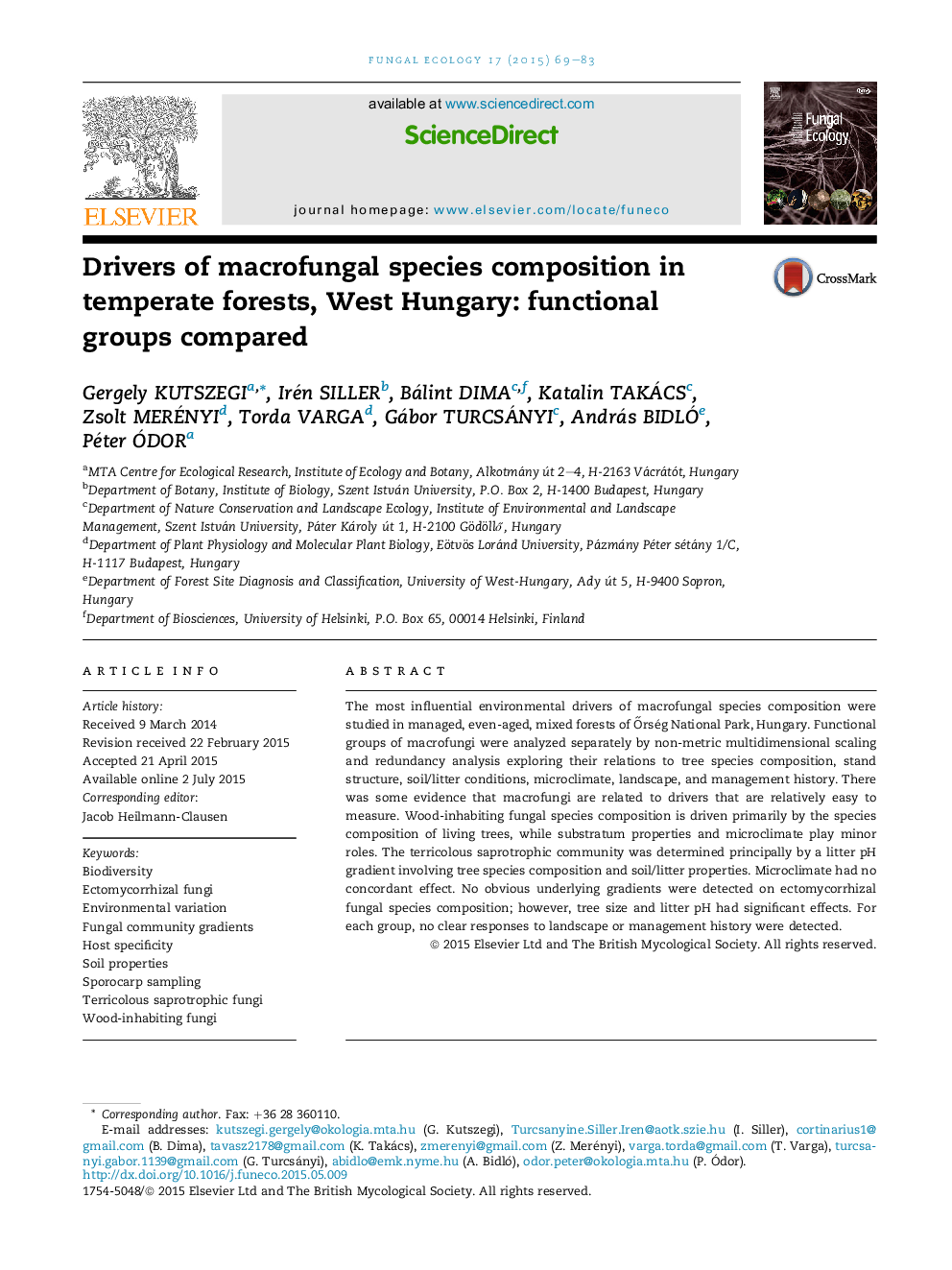| Article ID | Journal | Published Year | Pages | File Type |
|---|---|---|---|---|
| 2053789 | Fungal Ecology | 2015 | 15 Pages |
•Tree species composition drove wood-inhabiting fungal communities.•A litter pH gradient structured terricolous saprotrophic fungal communities.•Drivers of EcM fungi varied by method, but tree size and litter pH were important.•No strong effects of landscape structure and management history detected.
The most influential environmental drivers of macrofungal species composition were studied in managed, even-aged, mixed forests of Őrség National Park, Hungary. Functional groups of macrofungi were analyzed separately by non-metric multidimensional scaling and redundancy analysis exploring their relations to tree species composition, stand structure, soil/litter conditions, microclimate, landscape, and management history. There was some evidence that macrofungi are related to drivers that are relatively easy to measure. Wood-inhabiting fungal species composition is driven primarily by the species composition of living trees, while substratum properties and microclimate play minor roles. The terricolous saprotrophic community was determined principally by a litter pH gradient involving tree species composition and soil/litter properties. Microclimate had no concordant effect. No obvious underlying gradients were detected on ectomycorrhizal fungal species composition; however, tree size and litter pH had significant effects. For each group, no clear responses to landscape or management history were detected.
